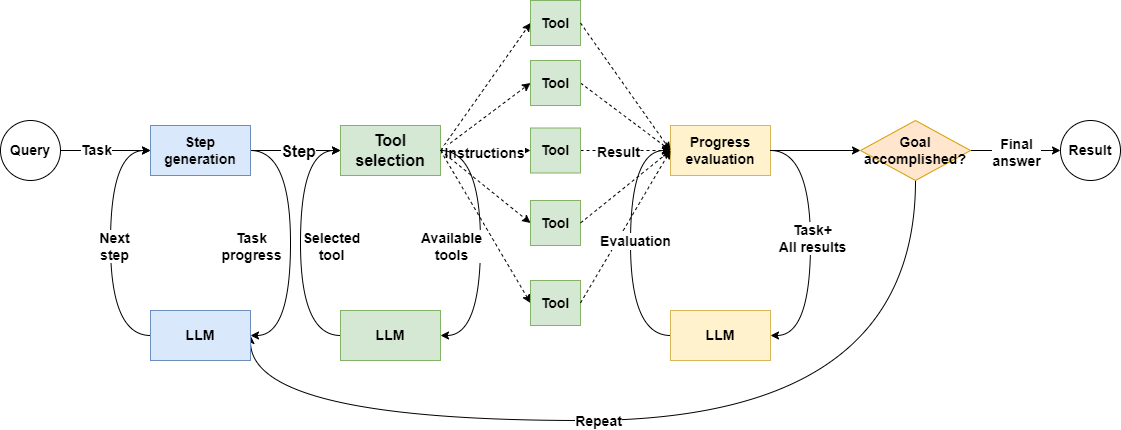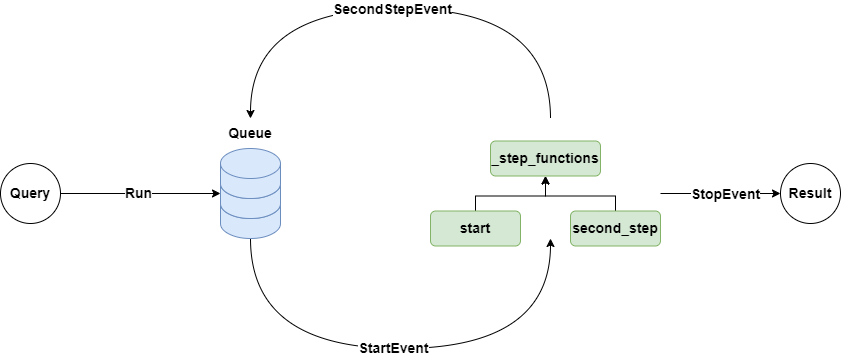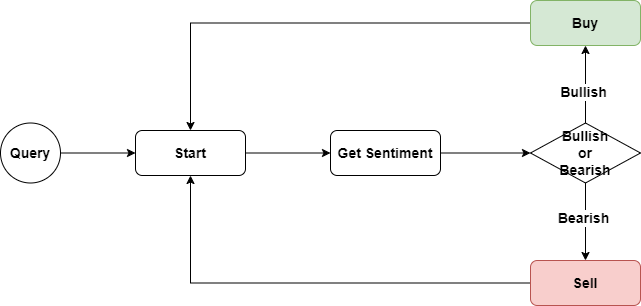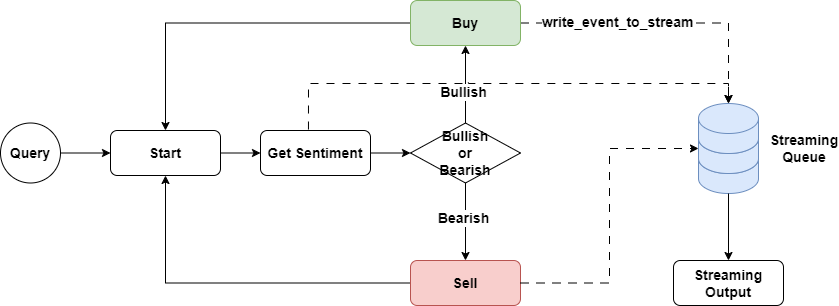Deep Dive into LlamaIndex Workflow: Event-driven LLM architecture
What I think about the progress and shortcomings after practice

Recently, LlamaIndex introduced a new feature called Workflow in one of its versions, providing event-driven and logic decoupling capabilities for LLM applications.
In today's article, we'll take a deep dive into this feature through a practical mini-project, exploring what's new and still lacking. Let's get started.
Introduction
Why event-driven?
More and more LLM applications are shifting towards intelligent agent architectures, expecting LLMs to meet user requests through calling different APIs or multiple iterative calls.
This shift, however, brings a problem: as agent applications make more API calls, program responses slow down and code logic becomes more complex.
A typical example is ReActAgent, which involves steps like Thought, Action, Observation, and Final Answer, requiring at least three LLM calls and one tool call. If loops are needed, there will be even more I/O calls.

Is there a way to optimize this?
As shown in the diagram above, in a traditional programming model, all I/O calls are linear; the next task must wait until the previous one is completed.
Although mainstream LLMs now support result generation via stream output, in agent applications, we still need to wait for the LLM to finish generating results before returning or moving to the next phase.
Actually, we don’t need all I/O calls to proceed sequentially; they can be executed concurrently, as shown in the diagram below:

Does this diagram look familiar? Yes, Python's asyncio package provides the ability to execute I/O-bound tasks concurrently, and nearly all I/O-based APIs, including LLM clients, support concurrent execution.
LlamaIndex's Workflow also utilizes the principles of concurrent programming. It goes further by not only encapsulating the details of the asyncio library but also providing an event mechanism that allows us to decouple different segments of the business process.
Now that we understand the background, let's step through LlamaIndex Workflow with an actual project.
First Impressions
Before the main course, let's have an appetizer by familiarizing ourselves with the elements and basic principles through a simple code example.
Importing necessary packages
First, we need to import the necessary tools. Workflow is already included in the latest version of LlamaIndex, no separate installation is needed.
from llama_index.core.workflow import (
Event,
StartEvent,
StopEvent,
Workflow,
Context,
step,
)Defining some events
Since Workflow is an event-driven framework, we should start by defining some events.
To avoid inconsistencies, we can first define a BaseEvent, ensuring all events use the key payload for message passing.
class BaseEvent(Event):
payload: str | dict | NoneLet’s define our first event of the day: SecondStepEvent
class SecondStepEvent(BaseEvent):
...
Starting simple
Next, let’s start coding our first Workflow program, which is a subclass of Workflow containing two methods:
class SimpleWorkflow(Workflow):
@step
async def start(self, ev: StartEvent) -> SecondStepEvent:
return SecondStepEvent(payload=ev.payload)
@step
async def second_step(self, ev: SecondStepEvent) -> StopEvent:
return StopEvent(result=ev.payload)- The method
startaccepts aStartEventand then returns aSecondStepEvent. - The method
second_stepaccepts aSecondStepEventand then returns aStopEvent.
Let's get the code up and running to see how it works.
s_wf = SimpleWorkflow(timeout=10, verbose=True)
result = await s_wf.run(payload="hello world")
print(result)We have turned on the verbose option so that we can see in detail how the code is executed.

Trying out the visualization tool
LlamaIndex also generously provides a small tool that allows us to see the entire workflow process, which is very intuitive.
from llama_index.utils.workflow import draw_all_possible_flows
draw_all_possible_flows(SimpleWorkflow, filename="simple_workflow.html")
Explaining the principles
A quick look at the source code reveals that Workflow internally maintains a Context, which not only keeps an event queue but also maintains a dictionary containing each step.

When Workflow is initialized, the step decorator analyzes the signature of each method to determine which events it will receive and return, starting to listen to the event queue, and then storing this method in the step dictionary.
When the Workflow's run method is launched, it starts a runflow loop, initially placing a StartEvent in the event queue. If there's a method that accepts this StartEvent, it starts executing and returns the corresponding event, putting it back into the event queue.
The step method can also directly call the Context's send_event method to place an event in the queue.
If the runflow loop detects a StopEvent in the queue, it exits the flow and returns the final result.
With a basic understanding of the elements and implementation principles, we can now explore the advantages and shortcomings of the Workflow through a hands-on project.
Hands-on Project
In today's hands-on project, we'll step by step implement an automated trading robot that listens to market sentiment and executes stock trades, demonstrating Workflow's branching and looping control, Streaming events, and concurrent execution features.
Note: The following code uses pseudocode to explain the Workflow mechanism and does not contain any trading logic or investment advice.
If you're interested in learning more about the complete LlamaIndex workflow, check out this tutorial I wrote:

Branching and looping control
In the first version of the trading robot, we'll continuously monitor the latest news of a certain stock, analyze the sentiment implied in the news, and then make corresponding trades.
The entire code logic is shown in the diagram below:

First, we'll define a Trading class that uses async to implement the buy and sell methods.
class StockTrader:
async def buy(self, stock: str) -> None:
await asyncio.sleep(0.5)
print(f"Buying {stock}")
async def sell(self, stock: str) -> None:
await asyncio.sleep(0.5)
print(f"Selling {stock}")We also need to implement four events: LoopEvent, GetSentimentEvent, BuyEvent, and SellEvent, all of which are subclasses of BaseEvent, ensuring they follow a unified message-passing interface.
class LoopEvent(BaseEvent):
...
class GetSentimentEvent(BaseEvent):
...
class BuyEvent(BaseEvent):
...
class SellEvent(BaseEvent):
...Next, we start implementing the TradeMonitorWorkflow class, which contains the core business logic.
class TradeMonitorWorkflow(Workflow):
def __init__(self, total_cycle: int = 1, *args, **kwargs) -> None:
self.total_cycle = total_cycle
self.counter = 0
self.trader = StockTrader()
super().__init__(*args, **kwargs)
@step
async def begin(self, ev: StartEvent | LoopEvent) \
-> GetSentimentEvent | StopEvent:
print("We now return to the begin step")
if isinstance(ev, StartEvent):
self.stock = ev.payload
if self.counter < self.total_cycle:
await asyncio.sleep(3)
self.counter += 1
return GetSentimentEvent(payload=self.stock)
else:
return StopEvent(result="We're done for the day.")
@step
async def get_sentiment(self, ev: GetSentimentEvent) -> BuyEvent | SellEvent:
print(f"Wil get the latest sentiment for stock {ev.payload}")
if random.random() < 0.3:
return SellEvent(payload='Bearish')
else:
return BuyEvent(payload='Bullish')
@step
async def buy(self, ev: BuyEvent) -> LoopEvent:
print(f"We now buy some stock with sentiment {ev.payload}.")
await self.trader.buy(self.stock)
return LoopEvent(payload="Start a new cycle.")
@step
async def sell(self, ev: SellEvent) -> LoopEvent:
print(f"We now sell some stock with sentiment {ev.payload}")
await self.trader.sell(self.stock)
return LoopEvent(payload="Start a new cycle.")- The
beginmethod is our entry point, acceptingStartEventandLoopEvent. - The
StartEventis the default event that starts the code, and we pass the stock code through this event. - The
GetSentimentEventtriggers theget_sentimentmethod to obtain sentiment information. For simplicity, we use therandommethod to generate two sentiments,BullishandBearish, and then return the correspondingBuyEventorSellEventbased on the sentiment. - After a transaction is completed, the
LoopEventreinitiates thebeginmethod for a new round of looping. To simplify the code, we set only one loop. - In each loop, the
beginmethod returns aGetSentimentEventto trigger the acquisition of the latest stock sentiment. If all loops are completed, it returns aStopEvent. - When a
BuyEventorSellEventis received, the correspondingstepmethod executes the transaction based on the sentiment flag in the message body and returns aLoopEventto start a new loop.
As you can see, by using events, we can decouple complex loops and branching processes, making it possible for corresponding events to trigger new loops.
Let's use the draw_all_possible_flows tool to see if the entire flow chart matches our designed business logic diagram.
draw_all_possible_flows(TradeMonitorWorkflow, filename="trade_monitor_workflow.html")
Is that all? If it's just about decoupling loops and branching processes, couldn't I achieve that with some coding tricks?
Yes, but flow control is just the most superficial layer. Next, let's experience the powerful potential unleashed by combining asyncio with Workflow.
Streaming events
When building an agent chain, one of the most headache-inducing issues is how to feed back messages during the execution process to users, helping them understand the progress of code execution.
In the code above, we use the print method to print progress in real-time on the console, but this approach is not feasible for a web applications.
One solution is to launch a separate pipeline to push messages to users in real-time, but when multiple steps are executed concurrently, how to handle this pipeline becomes a challenge.
Fortunately, the Workflow's Context directly provides a message streaming pipeline, and we can conveniently write messages into this pipeline and handle them uniformly at the calling end through an async for loop.

Let's modify our previous trading program:
💡 Unlock Full Access for Free!
Subscribe now to read this article and get instant access to all exclusive member content + join our data science community discussions.





